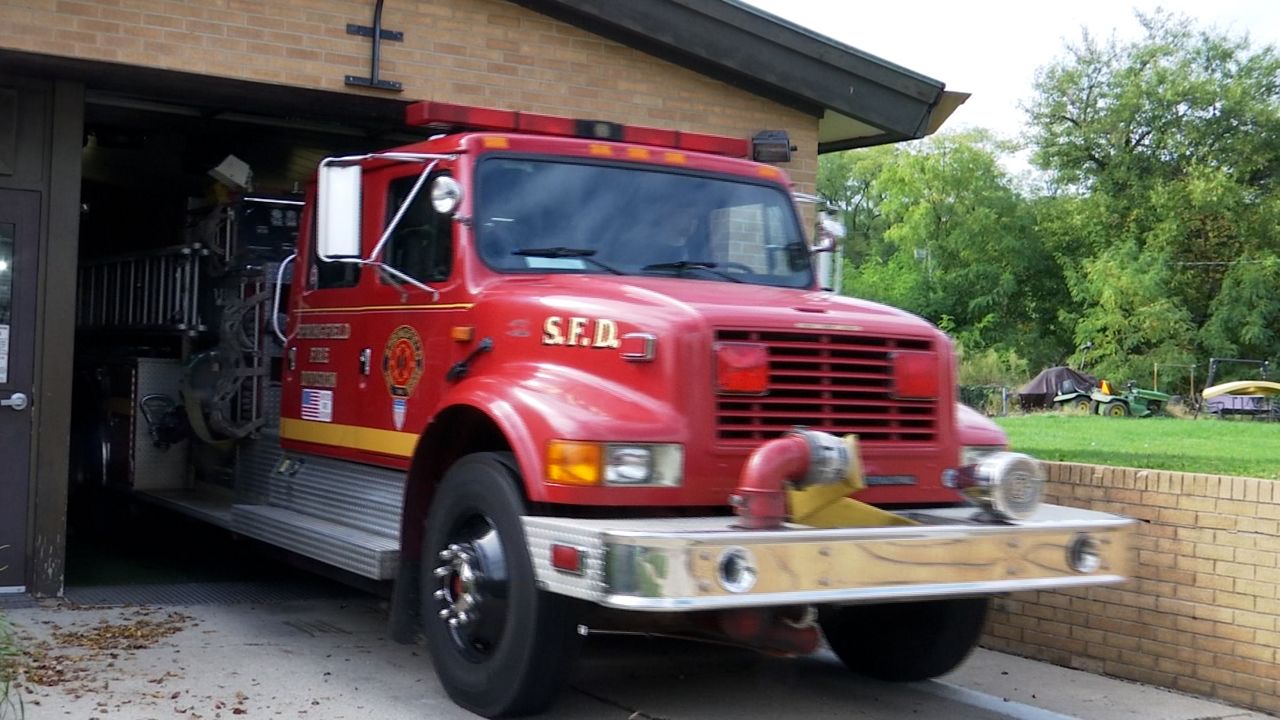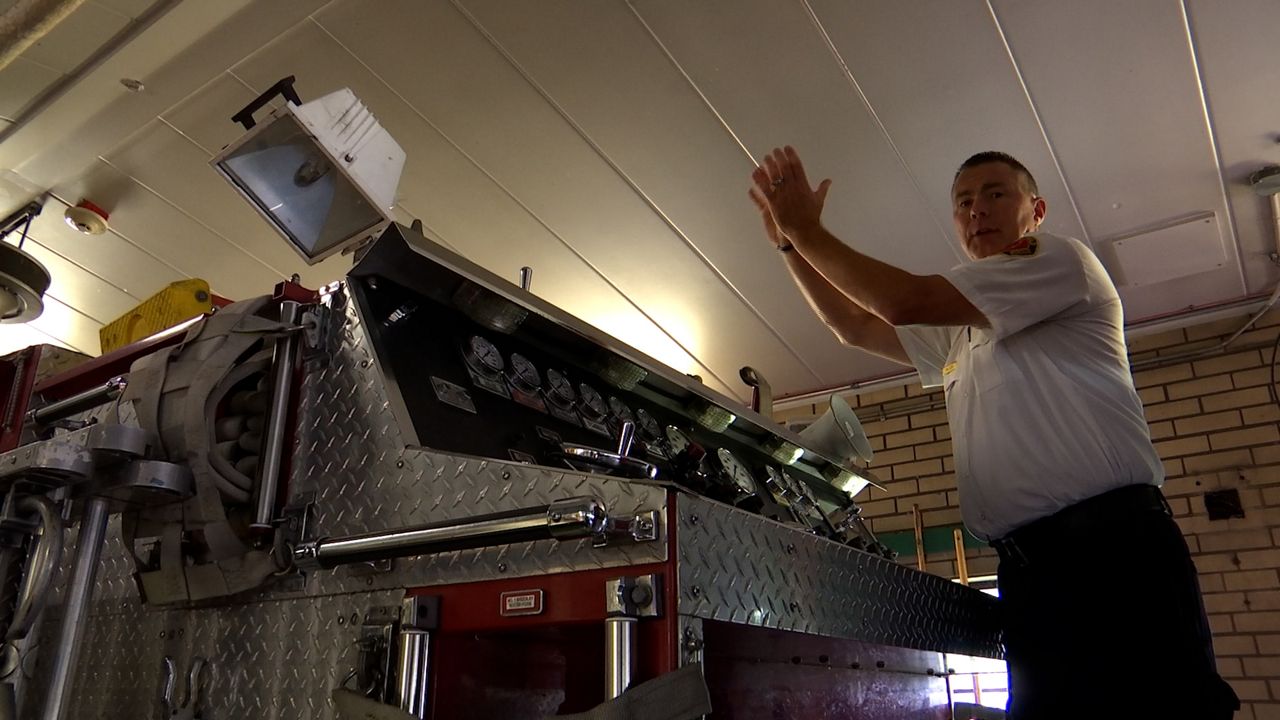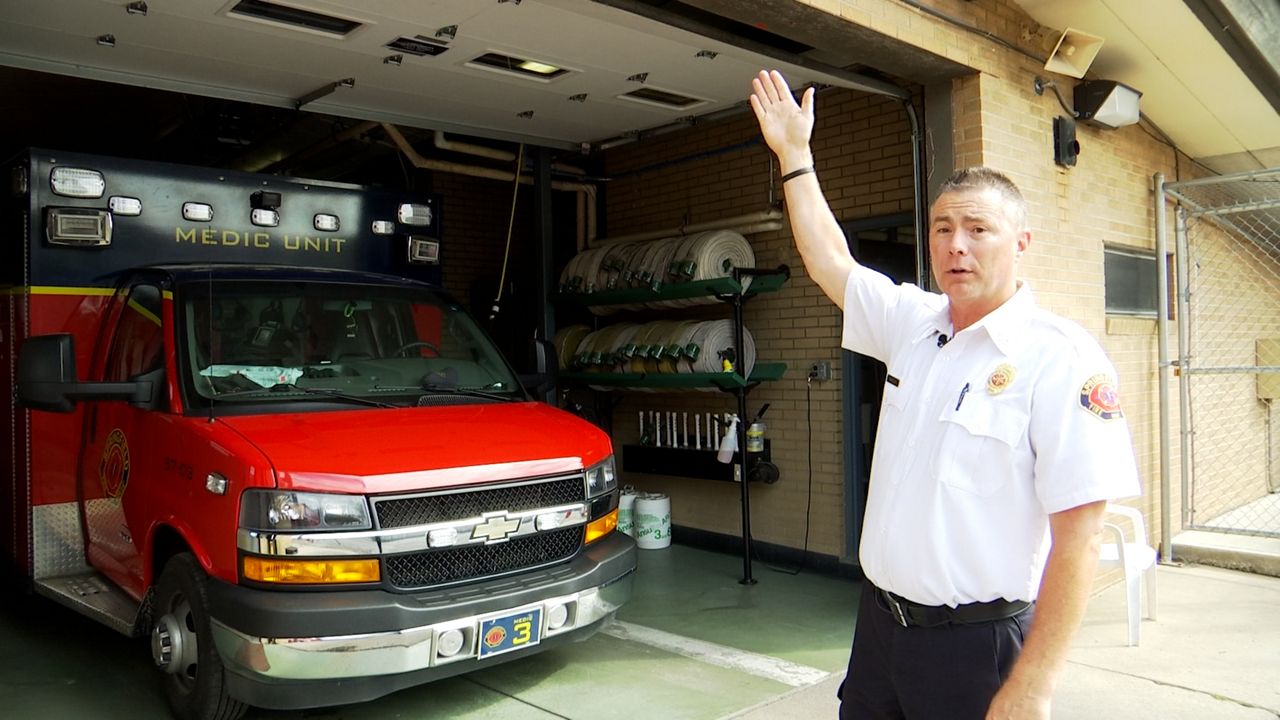SPRINGFIELD, Ohio — Every time the engine backs into its spot at Station 3, it's a reminder the Springfield Fire Department ran out of room decades ago. The only truck in the fleet able to fit into the garage, Engine 3, clears its roof with inches to spare, its drivers carefully squeezing out of what little space is left by the doors.
Fire Chief Brian Miller said the department has been vying for city funds to replace the building since before he took the job, but now with the American Rescue Plan, there’s a glimmer of hope.
To help the nation recover from the economic and health impacts of the coronavirus pandemic, the American Rescue Plan distributed federal relief funds to cities across the country.

With its $44.2 million, Springfield city leaders have eyed a number of long-deferred capital projects to improve city infrastructure and emergency services, including a potential $18 million to help the Springfield Fire Department build three new fire stations.
“I’d say the department’s been trying to get a new station for at least 20 years,” Miller said.
Besides the tight fit in the station three garage, Miller said a number of their stations are outdated and ill-equipped to handle the demands of a modern fire service. Station 3 is just the worst offender.
“It’s four-times smaller than it should be,” he said.
Built in the 1950s, Station 3 was made for a different time. Vehicles were smaller and there was no organized municipal EMS service.
Miller said when Station 3 got its first ambulance, the department had to dig out the floor to get an ambulance into the garage.
“There’s not enough header space up above to put a taller door in,” he said.
The tight space also means Engine 3’s crews have to work harder to achieve the same responses as any other engine.

To fit into the garage, they need to remove the deck gun. Permanently attached to top on every other similar apparatus in the fleet, the deck gun shoots water from the top of the vehicle.
Miller said Engine 3’s crew needs to detach and store it to get into the garage then reattach it anytime it's needed, potentially delaying response times for those living closest to Station 3.
“Every minute, the fire has a chance to grow without fire getting on it that could potentially cost property that could potentially cost lives,” he said.
Besides the insufficient space, architects also never considered female firefighters and their need for privacy or decontamination areas to prevent first responders from bringing carcinogenic material into their living spaces. Miller said crews from multiple fire stations have to bring their turnout gear to headquarters to wash and replace.
For years, Miller has been hoping to replace three or four of the fire stations to help Springfield catch up with modern standards for first-responders.

“Clearly these stations are undersized for our 2021 mission and quite frankly our mission may continue to grow,” he said. “We’re not just trying to address today’s needs we’re trying to be a bit visionary.”
Throughout his time as chief though, Springfield’s lacked room in the budget to offer any solutions.
“It’s probably four or five million dollars per station,” Miller said.
Since the 1960s, Springfield’s population has been falling and so has its tax base. In the meantime, the cost of city services continued to rise, so Miller said his department had to get used to doing more with less.
The American Rescue Plan act changes the outlook. While the funds are earmarked for pandemic relief, Springfield leaders believe improving emergency services fall under its purview. Miller said building new stations will help keep first responders safe and prepared for future disasters and pandemics.
With $18 million from the plan, Miller said the department hopes to get started on the first new station next year, building Station 3’s replacement on newly acquired land they hope will improve the department’s response footprint.
“It gives us great access to a north-south route and just a couple blocks north is East John Street which is a main east-west thoroughfare,” he said.
Miller said another will go on the east side and he’s still scouting locations for a third station. He said three bigger and better stations could potentially replace four of his oldest.
Springfield has until 2026 to finalize how to allocate the funding. While Miller said the money for the fire stations is not guaranteed he and city leadership are agreed the plan is a priority for the Rescue Act dollars.
“Myself and the new firefighters are just super happy that we’re gonna get some love out of this,” he said.
The city has already received half of the money it’s been promised in the plan. The rest will come next year.



